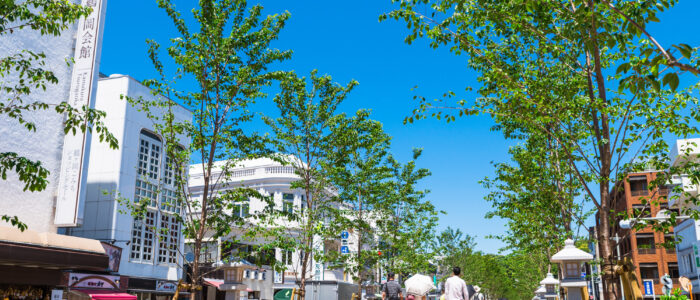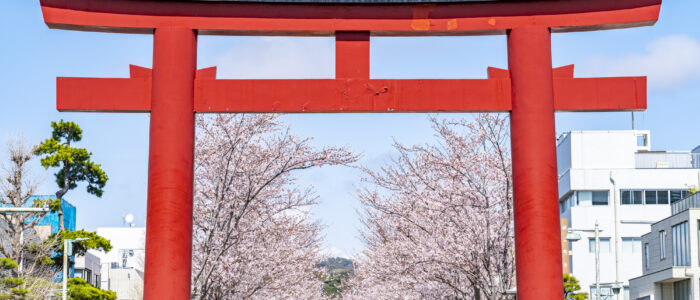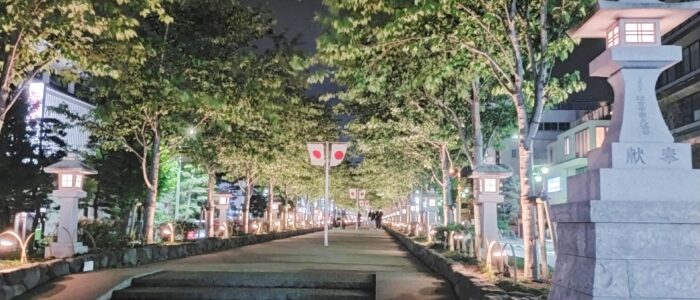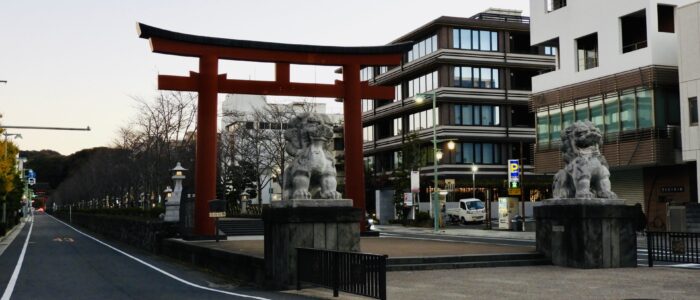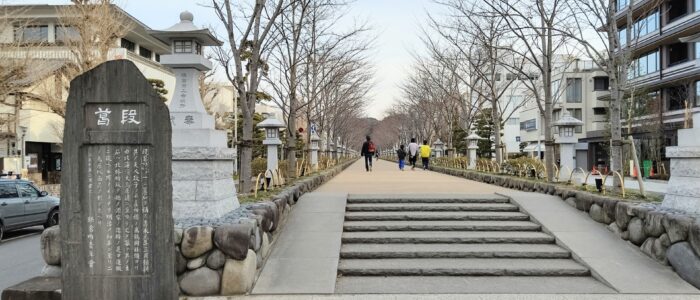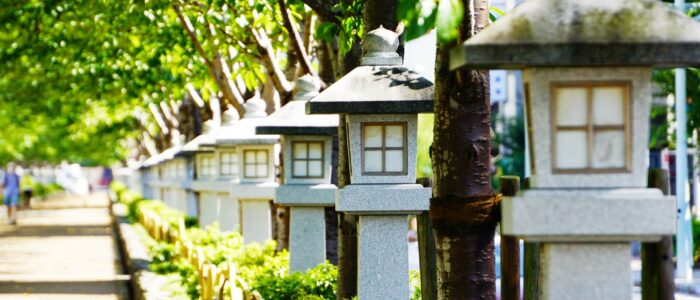Wakamiya-oji Avenue and Dankazura Path (若宮大路と段葛)
Discover Wakamiya-oji Avenue and Its Origins
Wakamiya-oji Avenue is a grand promenade running north to south through Kamakura, designed under the urban planning of Minamoto no Yoritomo (源頼朝) in the late 12th century. Modeled after the ancient Suzaku-oji Avenue of Kyoto, it stretches in a straight line from Yuigahama Beach to Tsurugaoka Hachimangu Shrine (鶴岡八幡宮), reflecting both a strategic urban vision and the spiritual wishes of Yoritomo.
Highlight: Dankazura Path and Architectural Beauty
The most iconic feature of Wakamiya-oji is the Dankazura Path, located between the Second and Third Torii gates. This elevated central walkway was built to improve drainage in the marshy terrain, with deep side gutters guiding rainwater toward the sea. Its gradually narrowing width near the shrine creates a visual illusion, enhancing the grandeur of Tsurugaoka Hachimangu Shrine (鶴岡八幡宮).
Cultural Meaning and Blessings
According to tradition, the Dankazura Path was created to pray for a safe childbirth for Hojo Masako (北条政子), Yoritomo’s wife. The avenue is also mentioned in the historical chronicle Azuma Kagami (吾妻鏡), highlighting its cultural and spiritual significance throughout Japanese history.
Local Treats, Experiences, and Flavors
Lined with traditional shops and long-established sweet stores, Wakamiya-oji offers a delightful stroll filled with Kamakura’s local flavors and atmosphere. In spring, about 200 cherry trees along the Dankazura bloom in a spectacular arch of blossoms, which becomes even more magical at night with softly lit lanterns.
Getting There and Walking Details
The 1.8-kilometer stretch from Yuigahama Beach to Tsurugaoka Hachimangu Shrine (鶴岡八幡宮) is perfect for a relaxed walk. The route is well-signed, and access via train and foot from nearby areas is easy and efficient.
Best Time to Visit
Mid-March to early April is the peak cherry blossom season. For a calmer experience, visit early in the morning or around dusk. If you’re staying at Tosh’s Place (トシズプレイス), you can enjoy a peaceful morning walk before breakfast or an evening stroll when the avenue is less crowded. The area also shines with fresh greenery in early summer and vibrant colors in autumn.
Nearby Attractions Within Walking Distance
Many attractions are within walking distance from Wakamiya-oji, including Tsurugaoka Hachimangu Shrine (鶴岡八幡宮), Kamakura Museum of Literature, Kamakura National Treasure Museum, and Komachi Street (小町通り). From Tosh’s Place (トシズプレイス), you can create a flexible travel plan—exploring the historic sites in the early hours or returning to rest before heading out again.
Who Will Enjoy This Spot?
- History and architecture buffs: Explore how the avenue was planned for defense and symbolism.
- Photography lovers: Capture iconic shots of the cherry blossom tunnel and symmetrical path.
- Travelers who value quiet moments: Visit during early morning or evening for a tranquil experience.
- Those seeking a live-like-a-local trip: Enjoy a self-guided journey with flexibility and comfort.
Wrap-Up: Discovering the Depths of Kamakura Through Wakamiya-oji
Wakamiya-oji Avenue and the Dankazura Path are more than just a shrine approach—they are a profound embodiment of Kamakura’s history, urban design, and spiritual heart. From its symbolic structure to seasonal beauty, this sacred road offers ever-changing discoveries. With the flexibility to explore at less crowded times, you can truly connect with the essence of Kamakura.

